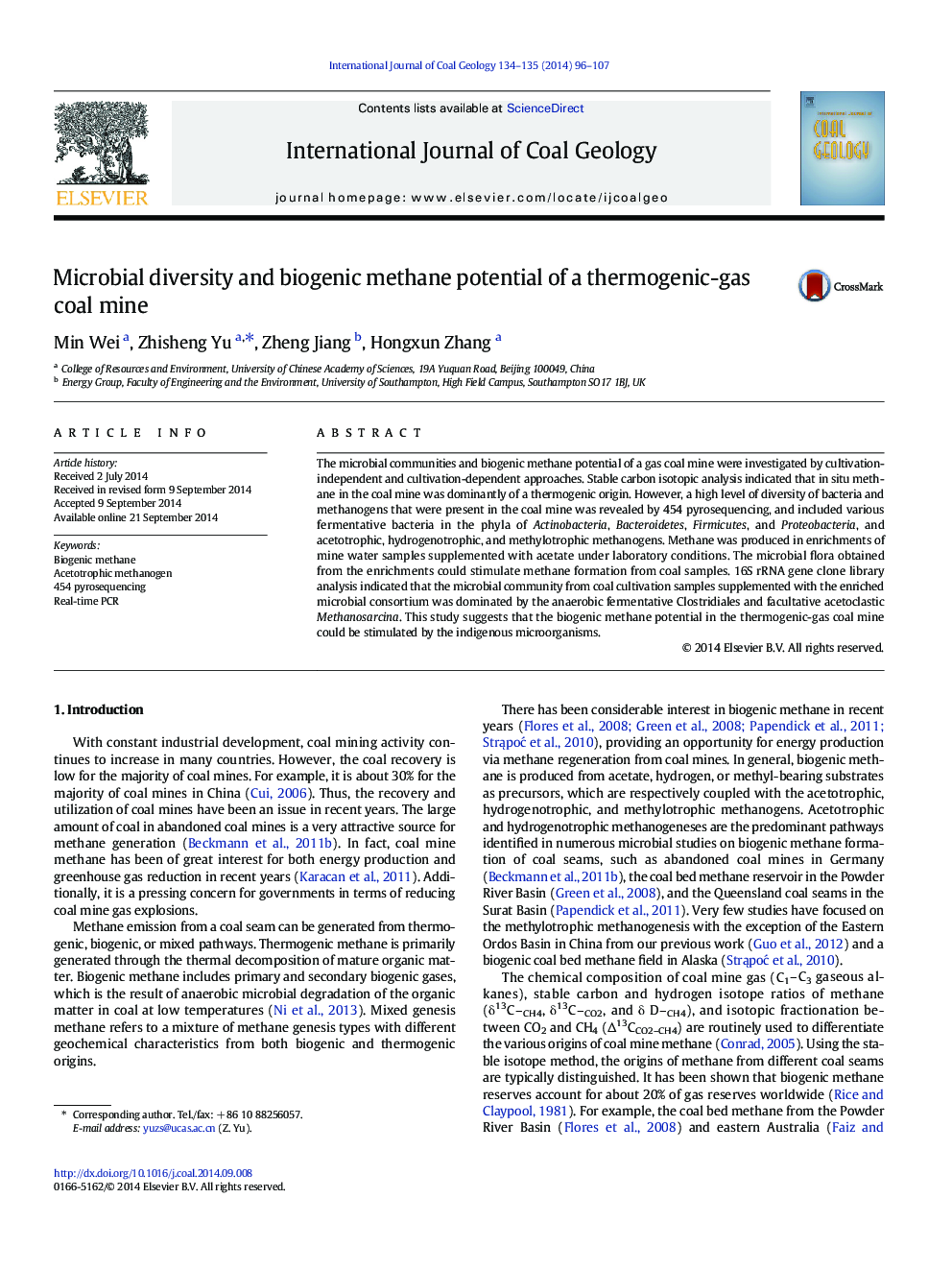| Article ID | Journal | Published Year | Pages | File Type |
|---|---|---|---|---|
| 1753139 | International Journal of Coal Geology | 2014 | 12 Pages |
•A high diversity of methanoges and fermentayive bacteria existed in coal seam.•Acetotrophic methanogenesis was predominant in coal seam.•Bioconversion from coal to methane could be realized by enriched native microbial consortia.
The microbial communities and biogenic methane potential of a gas coal mine were investigated by cultivation-independent and cultivation-dependent approaches. Stable carbon isotopic analysis indicated that in situ methane in the coal mine was dominantly of a thermogenic origin. However, a high level of diversity of bacteria and methanogens that were present in the coal mine was revealed by 454 pyrosequencing, and included various fermentative bacteria in the phyla of Actinobacteria, Bacteroidetes, Firmicutes, and Proteobacteria, and acetotrophic, hydrogenotrophic, and methylotrophic methanogens. Methane was produced in enrichments of mine water samples supplemented with acetate under laboratory conditions. The microbial flora obtained from the enrichments could stimulate methane formation from coal samples. 16S rRNA gene clone library analysis indicated that the microbial community from coal cultivation samples supplemented with the enriched microbial consortium was dominated by the anaerobic fermentative Clostridiales and facultative acetoclastic Methanosarcina. This study suggests that the biogenic methane potential in the thermogenic-gas coal mine could be stimulated by the indigenous microorganisms.
Graphical abstractFigure optionsDownload full-size imageDownload as PowerPoint slide
